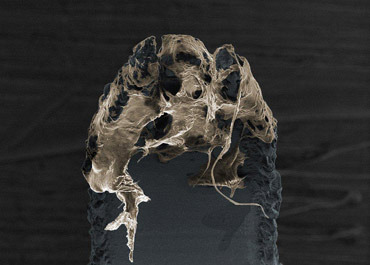Strategic research collaboration into skin cancer treatment
The University of Queensland (UQ) has entered a three-year collaboration with Denmark-based pharmaceutical company LEO Pharma with the aim of delivering new treatment options to patients suffering from skin cancer.
The collaboration was facilitated by UQ’s research commercialisation company UniQuest. It will explore four types of activities over the three years: exploratory clinical trials; basic research; contract research; and material transfer agreement (MTA) activities.
Professors Nick Saunders, Ian Frazer and Matt Brown from the UQ Diamantina Institute, and Professor Peter Soyer and Dr Tarl Prow from UQ’s School of Medicine, will work at the Translational Research Institute to determine which genes are responsible for squamous cell carcinoma - the second-most common skin cancer in the world, with Australia having one of the highest incidences.
The research collaboration is the first study of its kind to examine the genetic changes that lead to skin cancer as it occurs. UQ Deputy Vice-Chancellor (Research) Professor Max Lu said the researchers’ work “will reveal new data about the basic causes of skin cancer, and how mutations in skin cells lead to tumours … With this information, new treatments for skin cancers are likely to emerge”.
Professor Soyer and Dr Prow have developed a micro-sized, minimally invasive, painless skin biopsy device to be used in the research. Professor Soyer said the device will take small samples from individual lesions (skin cancers) over a period of time, and these would be genetically sequenced and analysed for mutations.

“Our micro-biopsy device for molecular pathology forms a bridge between clinical dermatology and high-throughput genetic sequencing,” he said. “For the first time, researchers can follow a suspicious lesion as it turns malignant.
“This low-invasive approach, coupled with Professor Brown’s sequencing and bioinformatics expertise at the UQ Diamantina Institute and LEO Pharma’s expertise in skin cancer therapy, will offer real solutions to skin cancer patients in Queensland and further afield.”
Dr Thorsten Thormann, Vice President for New Product Discovery, LEO Pharma, said the company is “always on the lookout for universities and companies which excel within dermatology and can add valuable knowledge and expertise to LEO Pharma’s research and development activities”.
He said, “The collaboration with University of Queensland gives us a unique chance to develop new solutions and treatments for patients suffering from skin cancer.”
Blood test could be used to diagnose Parkinson's earlier
Researchers have developed a new method that requires only a blood draw, offering a non-invasive...
Cord blood test could predict a baby's risk of type 2 diabetes
By analysing the DNA in cord blood from babies born to mothers with gestational diabetes,...
DNA analysis device built with a basic 3D printer
The Do-It-Yourself Nucleic Acid Fluorometer, or DIYNAFLUOR, is a portable device that measures...



